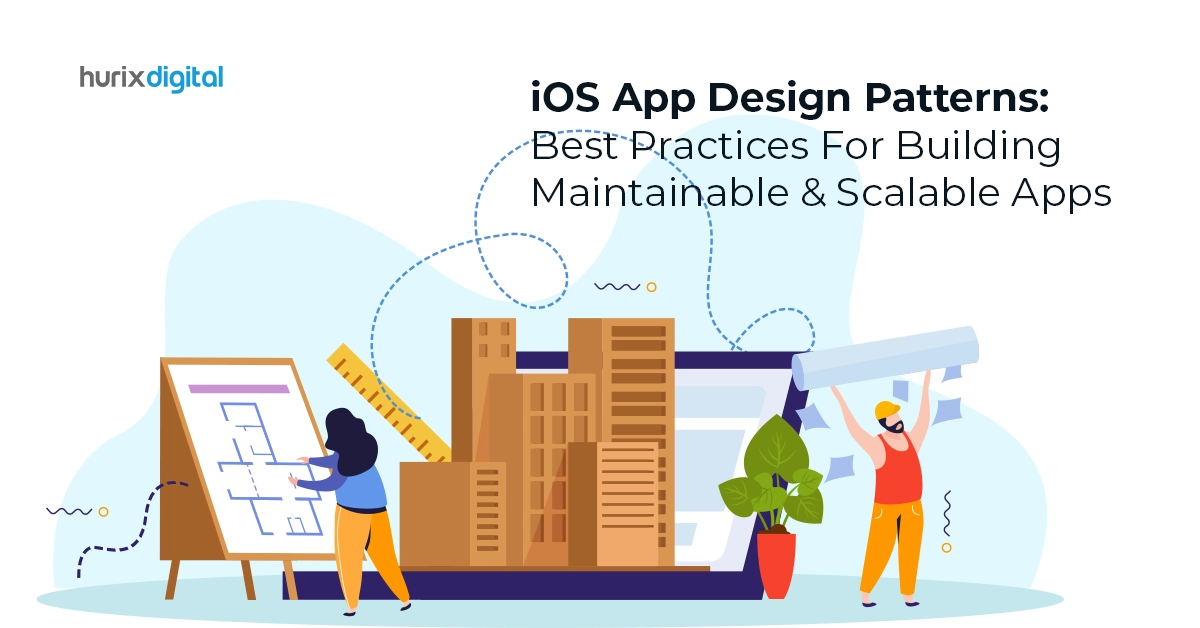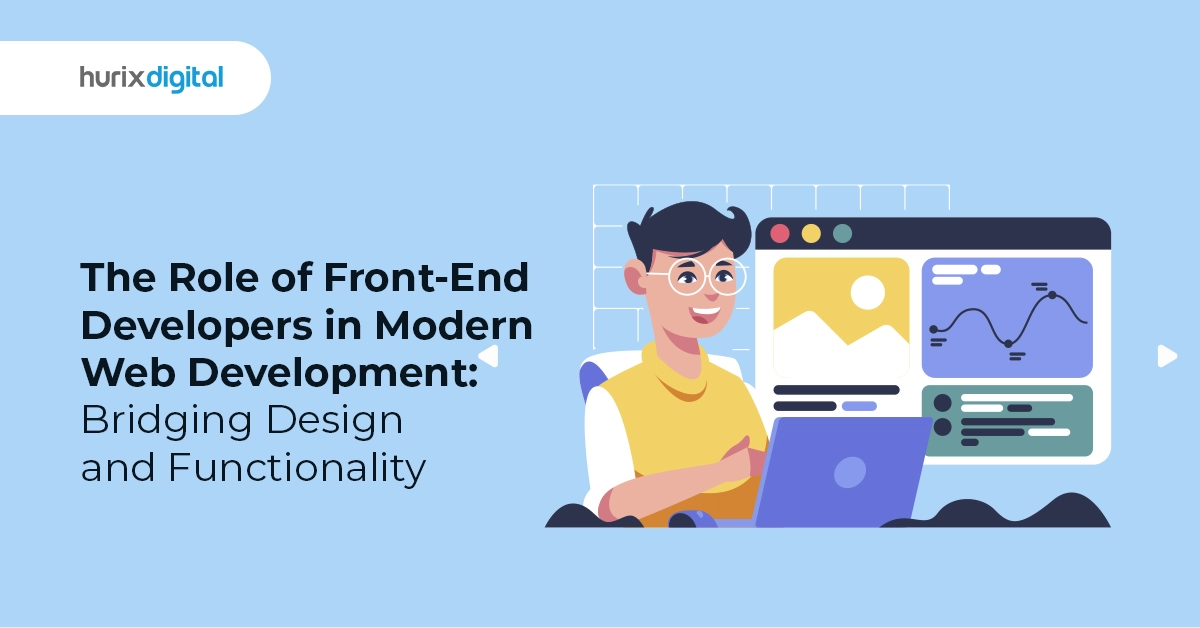
iOS App Design Patterns: Best Practices For Building Maintainable & Scalable Apps
Summary
Explore best practices for designing iOS apps that are maintainable and scalable. This blog provides tips for creating effective app design patterns.
Apple’s App Store is the biggest digital distribution platform in the world. With nearly 2 million apps on it, it is the one-stop destination for every iOS device user looking for utility tools, social media platforms, games, and entertainment apps.
For end consumers, this revelation adds to the list of reasons to invest in an iPhone. However, for iOS app developers, these stats depict something much bigger.
Think about it for a second: if you create an app for iOS that doesn’t have immensely strong differentiators, what are the chances of it not getting lost in the vast ocean of apps? Very slim.
But here’s the good news: more often than not, that “key differentiator” doesn’t have to be an innovative, “never thought before” feature. As a developer, you can set your app apart by simply enhancing its efficiency. One way to do that is by making it more maintainable and scalable.
In this post, we’ll explore the crucial aspects of iOS app design patterns, offering insights and best practices for developers to create maintainable and scalable applications. Let’s start!
Table of Contents:
- What are the Benefits of Creating Maintainable, Scalable iOS Apps?
- 5 Architectural and Design Patterns for iOS App Developers
- 3 Best Practices for Developing Efficient iOS Apps
- Wrapping
What are the Benefits of Creating Maintainable, Scalable iOS Apps?
As an iOS app developer, you might feel that developing apps that are maintainable and scalable is an arduous task. But it’s worth the effort.
Here’s why:
1. Eases Maintenance
By definition, maintainable apps are easier to maintain. As a developer, you can quickly identify bugs, fix issues, and bring in new updates. That’s so because such codebases are easier to interpret and work on.
2. Improves Adaptability
The biggest advantage of a scalable app over a non-scalable one is its ease of adaptability. The former always offers enough room to accommodate new features, integrations, and technology. This makes it painless for companies to evolve and stay competitive in the market.
3. Enhances User Experience
Scalable, maintainable apps are highly user-friendly. As they are regularly updated, these apps tend to perform incredibly well, with minimum interruptions and maximum responsiveness. It yields unparalleled user satisfaction and helps the app become popular among the audience.
Also Read: Top 6 Mobile App Development Frameworks for 2024!
5 Architectural and Design Patterns for iOS App Developers
The path to creating efficiently maintainable and scalable iOS apps goes through choosing the right architectural and design patterns. Here are five of the best ones in this regard:
1. Model-View-ViewModel (MVVM)
Arguably one of the best iOS architectural patterns, the Model-View-ViewModel (MVVM) pattern aims to facilitate user interface and interaction. It is made up of three interrelated components – Model, View, and ViewModel. The “Model” aspect represents data, the “View” aspect represents UI components, and the “ViewModel” aspect represents their intermediation.
2. Model-View-Controller (MVC)
The Model-View-Controller (MVC) pattern is another remarkable architectural pattern used for iOS app development. It’s ideal for creating applications that require separation of concerns or parallel development.
It has three interconnected parts: Model, View, and Controller. While the first two components represent the same elements as in the MVVM pattern, MVC’s unique component is the “Controller.” Instead of ViewModel, here, the “Controller” plays the role of an intermediary between “Model“ and “View.”
3. Delegate Pattern
The Delegate pattern is a popular iOS app design pattern in Swift. As the name suggests, this one leverages a quintessential delegation framework to enable different design objects to communicate with each other.
This pattern consists of two components – a “delegating object” and a “delegate object.” The former represents a class that delegates responsibilities, while the latter represents a class that handles the delegated responsibility. This unique design helps developers create modular and adjustable codes.
4. Singleton Pattern
If you’re a developer who wants to build a maintainable iOS app that offers efficiency in resource management, the Singleton pattern makes for an ideal choice.
Another Swift design pattern only consists of a single instance of a class, the design object, which acts as the global, centralized point of access for all shared resources throughout the application.
5. Protocol-Oriented Programming (POP)
Protocol-Oriented Programming (POP) is a programming paradigm in Swift. This one utilizes protocols to define behavior and implements them in structures or classes. By doing so, POP allows code reusability and flexible design creation, and so, fosters scalability and maintainability.
3 Best Practices for Developing Efficient iOS Apps
Simply choosing the right design pattern is not enough to promise maintainability and scalability. As an iOS app developer, here are some best practices you must stick to, to ensure your apps are top-notch:
1. Prioritize Performance
As per studies, almost 90% of users stop using an app due to its poor performance. So, consider this while creating one. When planning the design and architecture of an app, choose the ones that offer maximum performance and efficiency. Utilize efficacious data structures and algorithms to ensure your app runs smoothly.
2. Optimize Code
When writing the code of your iOS app, strive to make it clean, readable, and effective. Apple has a set of coding guidelines for developers. Make sure you follow them to improve efficiency and maintain quality. Additionally, make it a point to regularly optimize your code to reduce complexity and enhance performance.
3. Focus on Security
In 2022, Apple rejected more than 40,000 apps from developers for privacy violations. So, make sure yours doesn’t end up on this list. To do so, implement robust safety protocols in your app. Also, closely follow Apple’s security guidelines and best practices to ensure your app stands on par with their standards.
Also Read: Mastering Flutter: A Comprehensive Guide to App Development in 2024
Wrapping Up
For iOS app developers, creating maintainable and scalable apps is no longer an option.
Given the vast plethora of options available in Apple’s App Store, it’s become a necessity. It not only ensures your app gives the best experience to its users, In doing so, it also helps you build a reputation and gain a competitive advantage.
If you’re seeking guidance and support on your development journey, look no further than Hurix Digital. Our comprehensive Web and Mobile App Development solutions empower you to effortlessly craft maintainable and scalable iOS apps, as well as applications for other operating systems, without any hassle.
Reach out to us today and kickstart your journey toward app excellence!

Currently serving as the Vice President of Technology Delivery Operations at HurixDigital, a prominent global provider of digital content and technology solutions for publishers, corporations, and educational institutions. With over 16 years of experience spanning EdTech and various domains, I hold certification as a SCRUM Product Owner (CSPO). My expertise includes operations, finance, and adept people management skills.






